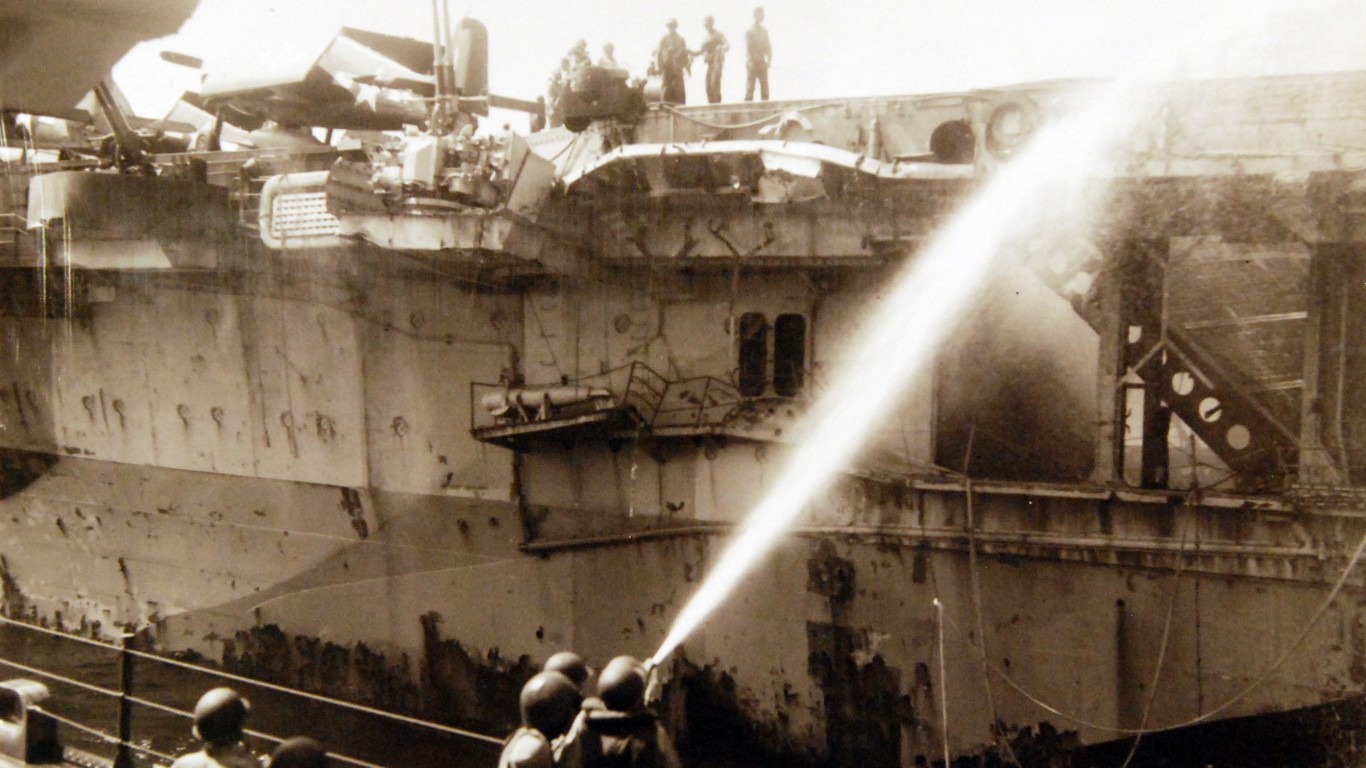Special Report
A Battle With Japan During WWII Was the Largest in US Naval History

Published:

Naval battles are a thing of the past. The last massive engagement of two fleets was The Battle of Leyte Gulf between the U.S. Navy and Japanese Imperial Fleet. It is also the largest naval battle in U.S. history.
The Battle of Leyte Gulf ran from Oct. 23 to Oct. 26, 1944. The American forces came from two different parts of the navy. These were the Seventh Fleet, commanded by Vice Admiral Thomas Kinkaid, and the Third Fleet, overseen by Admiral William F. Halsey. The fact that there was not a common chain of command has sometimes been described as a limitation to the swift transmission and carrying out of orders, but U.S. forces prevailed nonetheless.
The largest American ships in these fleets were several battleships and aircraft carriers. The Japanese Combined Fleet, commanded by Admiral Soemu Toyoda, also included several large ships of the same types. (Read about the peak strength of history’s most powerful navies.)
The engagement of ships over the three days was spread out over 100,000 square miles. The Americans had 232 ships to Japan’s 53. About 200,000 soldiers and sailors were involved. The cause of the battle was an attempt by Japan to prevent an American invasion of the Philippines.
As the U.S. forces approached, Japan drew the fleets into a number of separate engagements across the region. Over 400 planes joined the battle as well. The U.S. inflicted massive casualties on Japan and sunk 26 warships, including four aircraft carriers. The loss at Leyte Gulf dealt a death blow to Japan’s ambitions, crippling their navy and giving the U.S. undisputed command of the Pacific.
Click here to read about all of the most pivotal naval battles of all time.
Thank you for reading! Have some feedback for us?
Contact the 24/7 Wall St. editorial team.